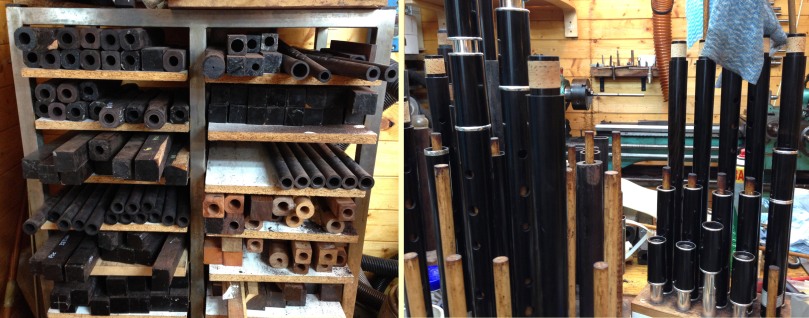How did I first become aware of Irish Traditional Music? Probably through this Long Player (remember those?) released by Topic Records in 1968. Paddy in the Smoke was – still is – central to my collection of folk music on vinyl and is available today as a CD or a download. The recordings were made during the mid 1960s in a London pub, The Favourite, in Holloway. Irish musicians gathered there every Sunday between noon and 2pm (such were the licensing laws of the day!) and those sessions are now legendary, probably representing the epitome of ‘folk music to aspire to’ – certainly that was the case for this wet-behind-the-ears 22 year old attempting to play along with these wonderful tunes on an ancient single-row Hohner melodeon. Here’s a sample of one of the tracks on YouTube: you can hear how the atmosphere of the occasions has been wonderfully captured.
More from my collection of fiddle recordings
Jump forward a few years and in the mid 1970s I was making my first trip to Ireland, visiting Cork, Clare and Longford – looking for The Music: I found it in abundance. By then I was playing an Anglo Concertina, but I was very aware that wherever you went to in Ireland – or whatever you listened to from the Irish tradition – it was above all else the fiddle that seemed to be the king-pin.

Fiddles at the Chief O’Neill’s Festival, Tralibane
Now – dare I say it – almost 50 years on from hearing those first notes, here I am living on the shores of Roaringwater Bay and I am more than ever immersed in the music. Still it’s the fiddle that’s ubiquitous, wherever I go and whatever I listen to.
Fiddles to the fore: Friday night session in Ballydehob
I started to learn the ‘violin’ when I was 11 years old. It wasn’t a fruitful venture – I had given it up within the year and moved on to the piano. I suppose I have just always been happiest with an instrument that only requires you to press a key or a button to get exactly the right note. But I am filled with admiration for anyone who plays the fiddle – who is able to perfectly pitch the notes, and then ‘bend’ the music when the mood requires it. You can’t ‘bend’ steel reeds!
The Rakes dance band, founded in 1956 – Reg Hall, Michael Plunkett and Paul Gross. They introduced me to Irish dance music back in the day… They are still going strong! Reg Hall was responsible for the Paddy in the Smoke recordings, together with Bill Leader
A fiddle is a violin – it’s the same instrument. Generally, classical players of the violin call it by either name, but traditional music players invariably call it a fiddle. It’s a beautifully constructed instrument with a feminine, flowing shape – a piece of craftsmanship which has been made the same way for 500 years. A seventh century Irish poem The Fair of Carman describes ‘…Pipes, fiddles, chainmen, Bone-men and tube players…’ but we don’t know what the fiddle was at that time. An excavation in Dublin during the 18th century uncovered a fiddle and bow dating from the 11th century: this is the oldest bow known in Europe – the bow is of dogwood and has an animal head carved on the tip.

The violin maker’s workshop (www.violinist.com)
Can anyone learn to play the fiddle? Probably – with sufficient patience and perseverance – and a bit of musicality. But it takes very particular skills to put The Music into the instrument. We are immersed in good fiddling around here: we have so many music festivals – Baltimore Fiddle Fair, Masters of Tradition, Chief O’Neill’s, Ballydehob Trad Fest – right on the doorstep. The whole gamut of different regional styles and techniques is here for us to take in. If you have half an hour or so to spare, it’s well worth looking at this YouTube video dating from 2008: firstly, you’ll see Jeremy Irons learning to play traditional Irish fiddle, and you’ll see his mentors, including maestro Martin Hayes. But Jeremy lives in Kilcoe Castle, just over the hill from us – so you can also get a flavour of life down here in Roaringwater Bay – immersed in the sweet fiddle music…
























